We’re all guilty of wondering whether or not our dishwashers save electricity and water. The short answer is yes but only if you know how to load a dishwasher properly.
You can max out on efficiency and make sure you’re truly cleaning all of your dishes if you do it right. Here’s what’s at risk and how to do it.
IN THIS ARTICLE:
How A Dishwasher Cleans?
To learn how to load a dishwasher it’s good to learn how a dishwasher cleans dishes.
- A small area at the bottom fills up with water
- The heating elements, heat it to the desired temperature of around 155 degrees Fahrenheit
- In that process, the detergent is mixed in with the water
- A pump leads the water to the spray arms that then spray water under pressure to clean the dishes
- The spray arms spin while the process occurs to get to all of the dishes


Before Loading And Turning On, Do This
Cleaning The Dishwasher
Just like you wouldn’t want to wipe something clean with a dirty cloth towel as it will prove to be ineffective, the same logic can be applied to washing dishes using a dirty dishwasher. If your dishwasher is dirty, it’ll:
- Not clean dishes properly
- Break down more easily
Should I Rinse Dishes Before Loading The Dishwasher
The myth, the legend, rinsing dishes before loading them in has been a standard practice for many but it’s unnecessary to do so, especially with newer dishwasher models. Even if you have hardened residue on your plates and utensils, the steam produced will loosen them up and the spray arms will then do their job properly. If you load it early and plan on washing later, you can turn on the rinse-only option to prevent the spread of unpleasant odors.
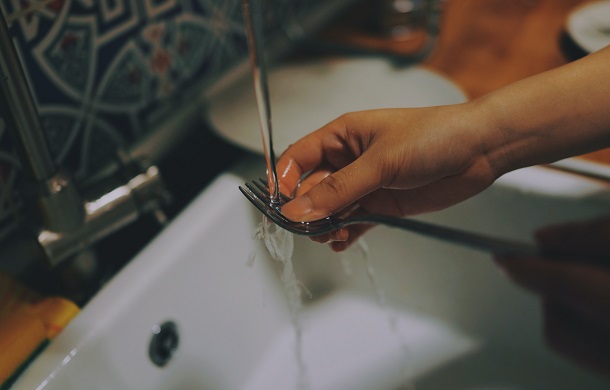

Loading Steps And Methods
Do This While Loading
To be able to fit in more stuff you’ll want to load the dishwasher from the back to the front. You also don’t want to overload it as any area that the water can’t get to simply won’t be cleaned in the end.
What To Avoid Washing?
- Sharp knives
- Wooden spoons, bowls, cutting boards
- Pans (non-stick variety especially)
- Ceramics
- Fine China
- Sterling Silverware
How To Load?
Glasses
Location: Next to tines on the top rack
Placement: Upside down
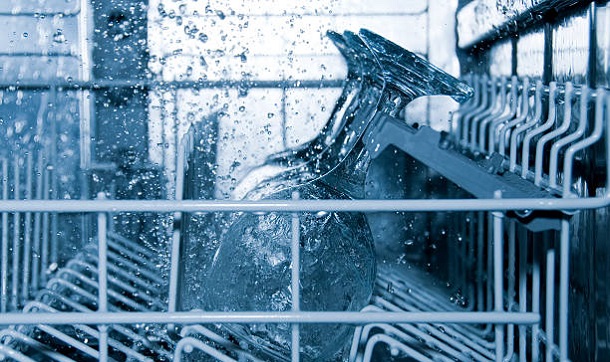

Bowls (Small, Large)
Location: Top rack, bottom rack
Placement: Slightly overlapped to save space, facing toward the center/Upside down, no dishes under
Plates
Location: Bottom Rack
Placement: At an angle, inward toward the middle of the rack, facing different directions
Flatware & Cutlery
Location: Designated utensils basket
Placement: Evenly spaced, different directions, spoons, and forks: upside down, butter knives: blade facing down
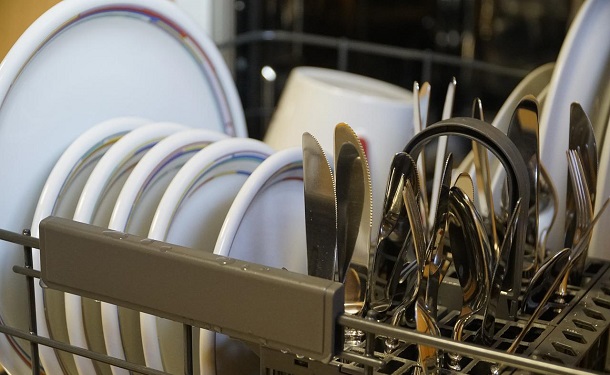

Big Utensils
Location: Top rack
Placement: Flat on the rack (not the utensils basket)
When The Dishwasher Will Clean Inefficiently?
Blocking The Sprayarms
The spray arms are located on the bottom of the washer and spray water under pressure upwards and in a circular motion. If you place a large pan over the whole of the bottom rack, none of the dishes will get cleaned properly. The large thing should always be placed on the sides and at an angle but that’s not all as loading a dishwasher the correct way can also play a big role in how well it’ll clean
Turning It On Half Full
Apart from the fact that you’ll use more water and electricity by running a half-empty dishwasher, the concern also becomes dishes that might end up on the bottom rack having been placed alone on the rack to tumble under the strong water pressure. The reason this is bad is that some things should only be cleaned on the top rack.
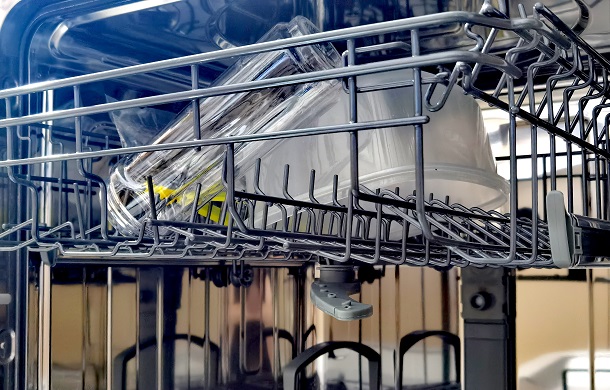

Tupperware And Plastic
More heat gets generated on the bottom rack of a dishwasher so you’re risking melted plastic if you place it there or it finds its way there. BPA-free bottles are also the only ones you should wash and these Tupperware containers and bottles should have a dishwasher safe symbol on them as well.
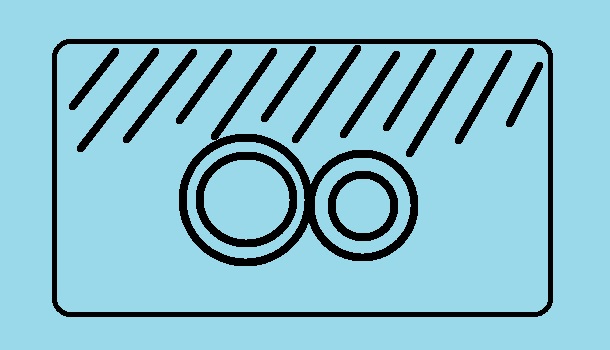

Fun Things You Can Load In The Dishwasher
Although it wouldn’t seem that it’s the most sanitary solution, if you have an old dishwasher you’re not using, you can load the most unordinary things in it as well.
- Oven mittens
- Knobs of appliances
- Sponges
- Reusable Towels
- Fridge shelves
- Makeup accessories (brushes, hairbrushes
- Toothbrush
- Shoes, sneakers, flip flops, baseball caps
- Kid’s toys
- Keys
- Garden tools
Note: You’ll have to ensure the proper location and placement of many of these items. If you’re using ta dishwasher that you also use to clean dishes, we suggest cleaning the dishwasher after you’re done cleaning all of the items mentioned above.
To Wrap It Up
Since there are so many different types of dishes and utensils, ranging from glass-made products to plastic-made products loading a dishwasher can be a hazardous task. Now that you know how to load it and where to load certain dishware and flatware, we’d like to remind you to never run a dishwasher half empty. By doing so you’re caring ever so slightly more for our planet.




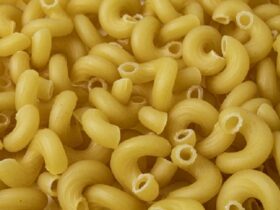











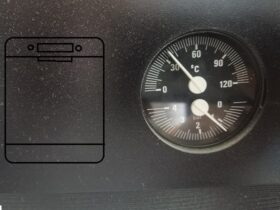

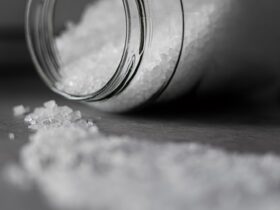
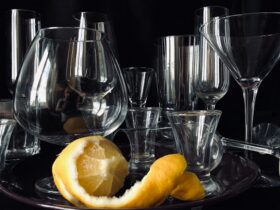
Leave a Reply